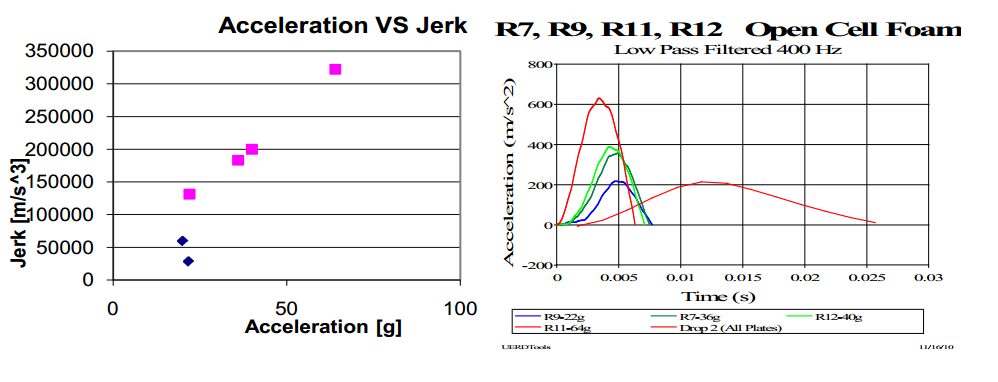![]() mTBI work in Dynamic Effects Lab - University of Maryland, College Park
mTBI work in Dynamic Effects Lab - University of Maryland, College Park
PI: Prof. William Fourney
We have been working closely with been working the University of Maryland School of Medicine (UMB) to determine amount of brain injury due to the acceleration of animal subjects in an effort to eventually understand the damage to the human brain subjected to blasts. We have been subjecting animals to given acceleration levels and UMB has been assessing the amount of brain injury. We are working towards a new method of predicting injury. The acceptable method of assessing the amount of injury in automobile crashes has been HIC (Head Injury Criteria) but we have found that this does not work for explosively related accelerations (the loading is applied too quickly).
HIC is really based upon the area under the acceleration time curve and for the very short time durations of accelerations due to explosive loading the HIC values are so small as to not even be in the ballpark of HIC numbers that could cause injuries in car crashes. We have been looking at using jerk (the time rate of change of acceleration (m/s/s/s).
We have tested quite a few animals and UMB has been assessing the amount of brain injury. In the curves below we show results from testing animal subjects. In the first graph we show jerk versus acceleration level. The graph shows acceleration levels can be as high a 20gs from a fall (points shown in blue) of only a few inches – yet cause no brain injury. On the other hand an acceleration of 20 gs from an explosively caused movement is also in the range of 20 gs and does cause brain injury. In the second curve we show acceleration versus time data from a drop of 9 inches (the long low curve) as well as curves from various blasting tests. Notice that the jerk (the slope of the acceleration time curve) of the drop test is only on the order of 50,000 m/s/s/s while jerk on the order of 300,000 can be caused by explosive loading.
We hope to show that jerk is a good indicator of brain injury where acceleration alone is not.


